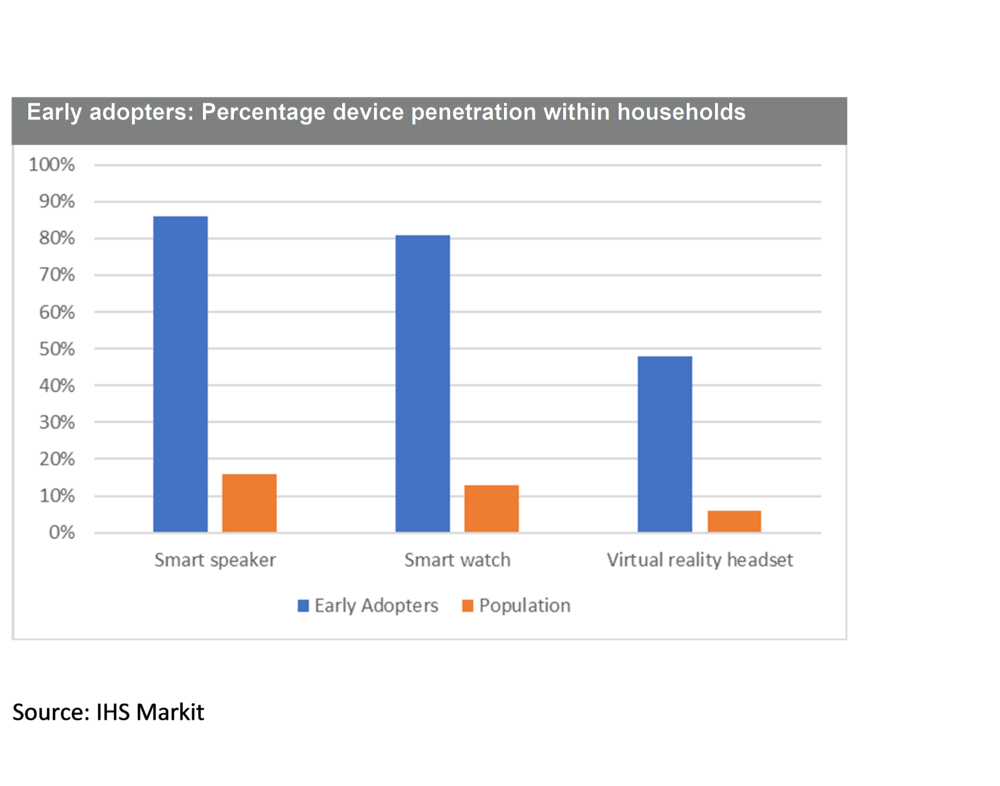It’s probably no surprise that those of us who bought Apple Watches and HomePods as soon as they were available are likely to be the first ones to shell out for “Apple Glasses” (the rumored name for Apple’s rumored augmented reality/virtual reality headset expected in 2020 or 2021).
Early adopters in various economies are dominating demand for leading-edge electronics devices, with these elite consumers owning 61% of all virtual reality (VR) headsets, 49% of all smartwatches and 43% of all smart speakers, according to a multinational survey conducted by IHS Markit.

The early adopters represent a select group of high-income individuals who purchase cutting-edge electronic products in greater volumes than other categories of people, which consist of mainstream buyers, accumulators and validators. The concentration of devices ownership in the early adopter group indicates that the market for VR headsets, smartwatches and smart speakers remains limited to a small number of users, according to IHS Markit.
“When it comes to acquiring the latest technology, early adopters dramatically outperform all other types of consumers, including mainstream buyers, accumulators and validators,” says James Allison, principal analyst, consumer devices, at IHS Markit. “Out of the 12 device types inquired about in the IHS Markit survey, early adopters reported they have access to 8.6 devices per household. This compares with just 3.6 for mainstream households.”
The survey results show the challenge that makers of cutting-edge devices like VR headsets, smartwatches, and smart speakers face when trying to expand the appeal of their products beyond these rarified buyers and into the realm of mainstream consumers.
Despite the huge amount of attention lavished upon VR headsets, smart watches and smart speakers, the highest-volume-growth phases for these products still lie in the future, according to IHS Markit. For example, global smart watch production is expected to more than triple in the coming years, rising to 92.8 million units in 2023, up from 30.7 million in 2019, according to IHS Markit. Meanwhile, production of smart speakers and digital assistants will soar to 248.6 million units in 2023, up from 104.4 million this year.
“During the next few years, the successful sellers of VR headsets, smart watches and smart speakers will be those that can demonstrate the value of their products to everyday people,” Allison says. “A combination of declining prices and increasingly compelling capabilities will be critical to attracting a larger audience. Brands need to closely watch early adopters’ usage of these devices to understand how they will be utilized by more mainstream consumers in the future.”
The IHS Markit Consumer Profiling Report was developed based on consumer surveys conducted in November 2018 and April 2019.
